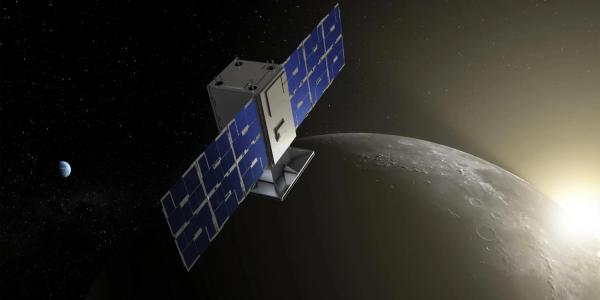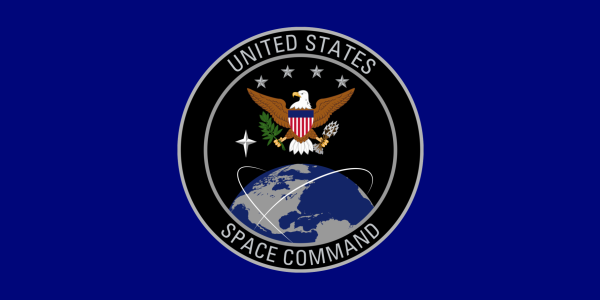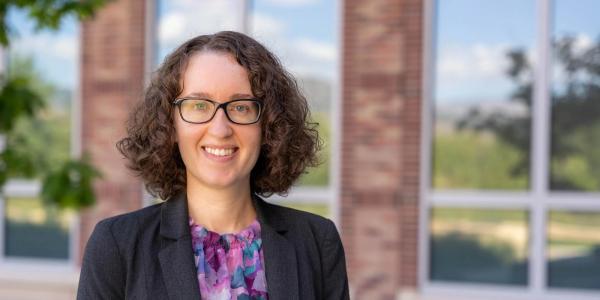
Above: Casey Heidrich
Header Image: Rendering of a satellite orbiting Earth.
University of Colorado Boulder researchers are working to keep America’s armed forces safe in space with a new research grant.
Casey Heidrich, a professional research associate in the Ann and H.J. Smead Department of Aerospace Engineering Sciences, is leading an Air Force Office of Scientific Research grant to develop a resident space object conflict simulation facility for cislunar space — the area between the Earth and Moon, which has become increasingly important for businesses and governments.
“We want to be able to simulate space conflicts and scenarios for what could be going on in orbit and how operators on the ground would respond to it,” Heidrich said. “With the increase in space object congestion from government and commercial entities, there are many open research questions on effective and efficient space traffic management.”
The grant will allow CU Boulder to set up a facility to perform scientific investigations on human-machine interaction, theoretical space object control, and distributed cognition. The facility will operate as part of Professor Marcus Holzinger’s Vision, Autonomy, and Decision Research Laboratory.
“Space is a vital resource for economic prosperity and national security. As more operators use that resource, it increases accidental collision risks as well as the potential for conflicts. We want to be able to investigate hypothetical scenarios so we’re prepared,” Heidrich said.
The grant will support the purchase of virtual reality headsets, specialized software, a video wall to show live data and ground tracking of satellites, and physiological sensors to monitor human response to situations.
“Sensors can give us an objective look at how the body is responding and let us know what we should improve. Electrodermal activity, eye tracking, cognitive load tools can all be very useful,” Heidrich said.
The facility will have three main components:
- A “games” room where participants will be given information on hypothetical space operations scenarios in real time as a mission evolves.
- An “adjudicator” room that will decide what information is provided to participants and in what format.
- An “observer” environment that will interface with physiological sensors to measure participants’ cognitive state and activity levels to provide information on the accuracy and reliability of decisions made by human operators in space conflict simulations.
Although the facility is officially part of aerospace engineering sciences, Heidrich calls it more “cognitive engineering.” While they will conduct space conflict simulations, the real goal is to study human response to those scenarios which include long-horizon decision making with minimal control.
“We can write a lot of algorithms to map out how things should occur, but the human factor, human intuition, that’s more difficult to simulate. If you overwhelm operators with data in a high-pressure scenario, they can’t make good decisions, but sometimes that happens in life. So how do we create better tools to help those future space operators,” he said.



